How Are Boolean Search Strategies And Other Search Filters Useful
Go on upwardly with the latest hiring trends!
Trying to narrow downward candidates for a part can be a difficult task for any recruiter. Using Boolean search writing can assistance y'all save time and ameliorate the quality and specificity of candidates from the potential pool.
Boolean search is based on the work of prominent British mathematician George Boole. His legacy was Boolean logic, a theory of mathematics in which all variables are either "true" or "faux", or "on" or "off". This logic still underpins all digital devices to this day, existing in most every line of estimator lawmaking.
Boolean search writing is a skill that top recruiters need to know in order to go meaningful candidate search results from a wide range of software, including LinkedIn, various job portals and Google. However, fully constructed Boolean search strings can expect both confusing and complex, and may seem hard to write. But never fearfulness! Nosotros're hither to teach you some of the tricks of the trade.
What is Boolean Search?
Boolean Search uses a combination of keywords and the three chief Boolean operators (AND, OR and NOT) to organise and sift through your searches. It produces more accurate and relevant results, allowing you to navigate through appropriate candidates, while disregarding the unrelated.
The first important thing to capeesh almost Boolean is that there are simply v elements of syntax to understand. These are:
AND
OR
NOT
()
""
By applying these appropriately, along with the keywords you wish to consider, y'all can create a huge range of search operations. There is no limit to how often you can use whatsoever of these elements in a search, so yous can create very specific search strings, which will relieve you a lot of fourth dimension in filtering the results.
The AND Operator
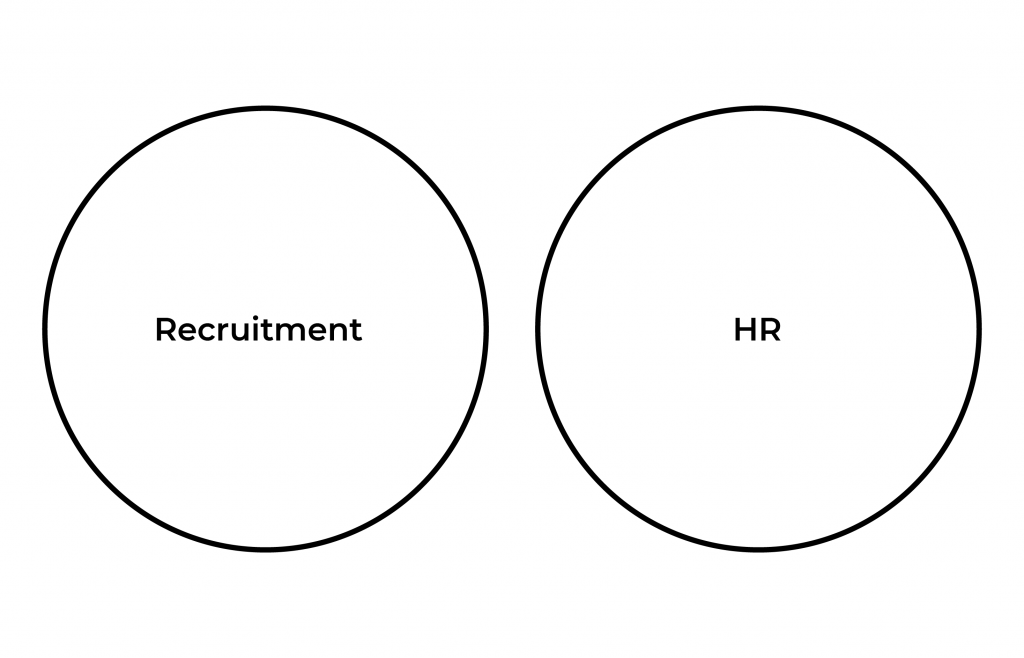
Have these two groups. In the offset grouping are all the people who have the keyword "recruitment" somewhere in their LinkedIn profile and in the second, all those who have the keyword "HR". But let's see what happens when we utilise the following Boolean cord:
Recruitment AND Hour
Nosotros are now request the LinkedIn database to search for all of the people who include both the word "Recruitment" and the word "HR" on their LinkedIn profile. We accept filtered out the excess and are left with the more specific candidates who fall in the cantankerous section of the Venn diagram.
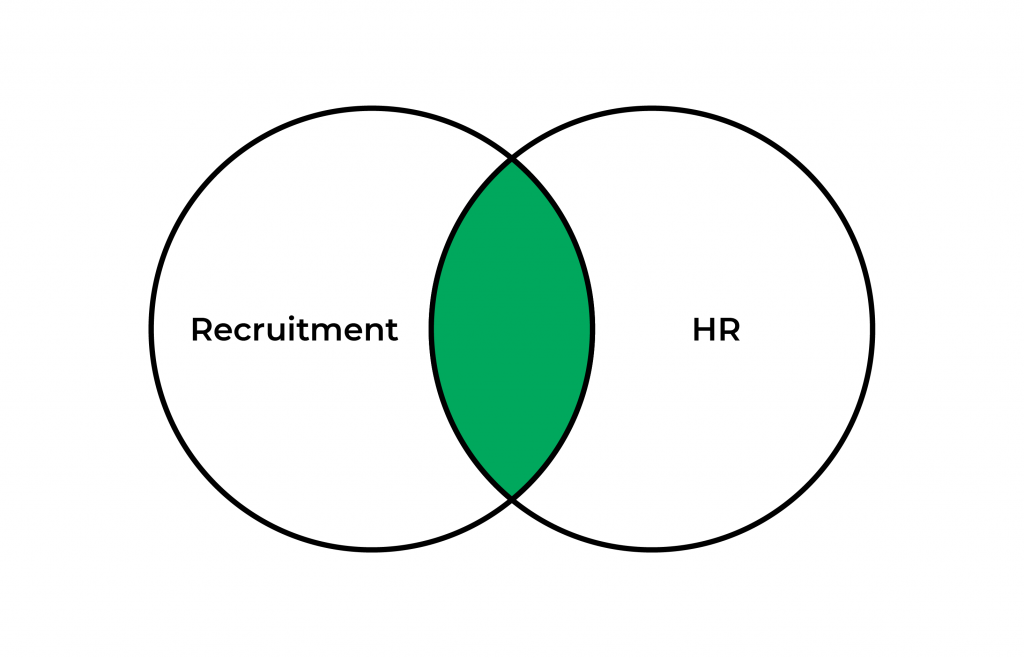
The more criteria we add using the AND operator, the less people we will find with our search. It sounds like an oxymoron, just as we narrow our search using this method, we are finding the people who are most relevant for the position.
The OR Operator
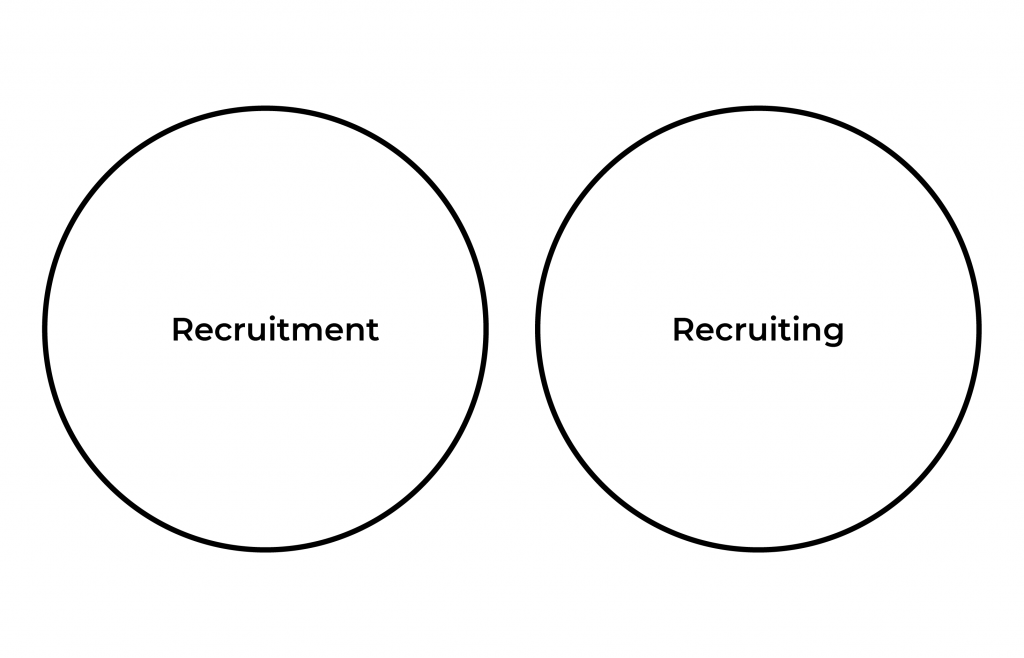
In this example, one group of people accept the keyword "Recruitment" in their LinkedIn profile, while the other have the keyword "Recruiting". Both words mean the same thing in terms of a skillset, but to an electronic database, they are completely separate terms. Let'due south employ the following Boolean string to help rectify this:
Recruitment OR Recruiting
At present we are asking the database to search for candidates who include either of the two terms in their LinkedIn profile, or both terms simultaneously. It makes sure that the potential correct candidate doesn't fall through the internet considering of semantics!
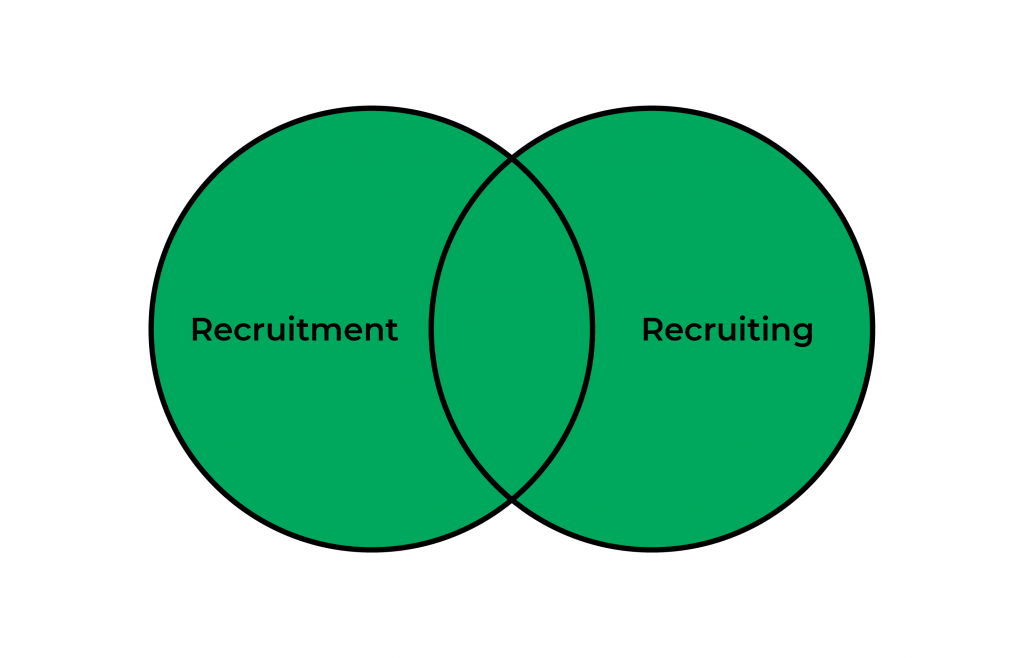
Using OR broadens the search to comprehend the entire Venn diagram. It enables u.s.a. to detect hidden talent e.thousand. people who have expressed their skills and experience in a unlike mode than you might normally search e.g. cyberbanking OR banking concern OR finance OR financial.
The Not Operator

The next example will help you lot narrow your search results by omitting unwanted criteria. Permit'southward accept the starting time elements used again with "Recruitment" and "HR" keywords on a LinkedIn contour and use the post-obit Boolean string:
Recruitment Not Hour
We are asking the database to search for candidates who have the discussion "Recruitment" in their profile, but to exclude any that also have the word "HR" in their profile and those who just take the give-and-take "Hr" in their contour. This means we are looking to find candidates who fall just on the left-hand side of the Venn diagram:
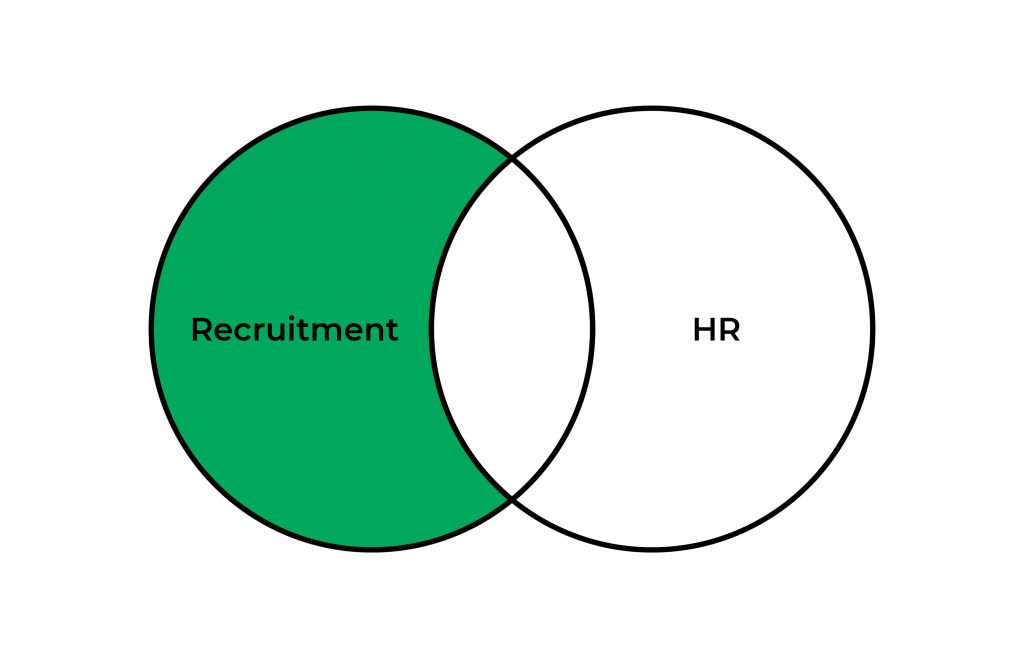
Using Not enables us to remove false positives from our candidate searches by eliminating irrelevant results.
Remember: Each of the 3 in a higher place Boolean operators should always be written in UPPER CASE. If not, they will not work.
Brackets ()
When using Boolean search, in that location is no fashion to determine how the figurer will solve our equation. This means that in social club to become the most relevant result for us, nosotros have to use parentheses to tell the estimator what to solve outset. This is where using brackets comes into play.
Brackets are essential for writing complex search strings, just their application oft causes the most confusion amongst recruiters. Essentially, a clause within brackets is given priority over other
elements effectually it. For example, if I was given the following search:
talent OR hr AND recruitment
Practice I hateful to say I desire to discover someone who has either the keyword "talent" or the keyword "Hour" on their profile, and has the word "recruitment" besides? Or practise I mean that they accept to have "talent" or the combination of "Hour" and "recruitment"? You see, the absence of brackets makes it incommunicable for the database to know what you hateful. Sentry how things change when you add brackets.
In the post-obit example, I have told the database that I need to find someone who has either "talent" or "HR" or both, and that they also demand to have "recruitment":
(talent OR hr) AND recruitment
But in the following example, I take told the database that I need to find someone who has "talent" or a combination of "recruitment" and "Hour":
talent OR (60 minutes AND recruitment)
The well-nigh common place that brackets are applied past recruiters is in the use of OR strings. Basically, if you've written OR somewhere in your search, call back about where the brackets volition go because their
placement volition affect how the estimator solves your Boolean search query, which volition affect search results you lot receive back.
Quotations ""
The utilise of quotations allows for even more specificity. If the keywords you lot're searching for demand to be considered as a whole (e.chiliad. gas engineer), then they must be enclosed inside quotation marks in the search string. If not, the database volition view the space between the 2 words as an AND, resulting in larger search that covers both words (gas AND engineer). Not ideal!
Utilize quotation marks whenever you lot have two or more words in a search that need to remain together similar "Homo Resources" or "Data Engineering". Quotations essentially define a number of words as 1 verbal term, allowing you to pinpoint more accurately.
Today, nosotros've explained the bread and butter of Boolean! We hope it helped you gain a better understanding of the fundamentals of Boolean search and made it less daunting to tackle in the future. In that location are, of course, several other Boolean modifiers you can employ to further refine and improve your Boolean searches, as well as many more than rules for the use of Boolean in various other search engines and databases beyond LinkedIn.
For a complete and comprehensive guide to mastering the art of Boolean search, cheque out our dedicated courses on SocialTalent. Why not request a demo today?
How Are Boolean Search Strategies And Other Search Filters Useful,
Source: https://www.socialtalent.com/blog/recruitment/the-beginners-guide-to-boolean-search-terms
Posted by: hortonegary1939.blogspot.com


0 Response to "How Are Boolean Search Strategies And Other Search Filters Useful"
Post a Comment